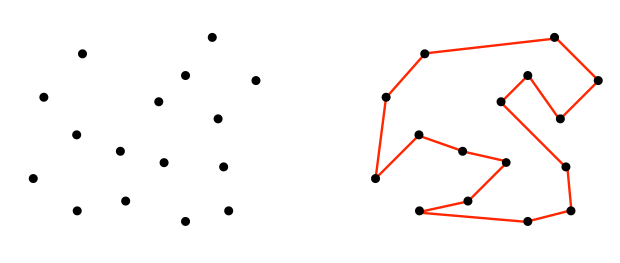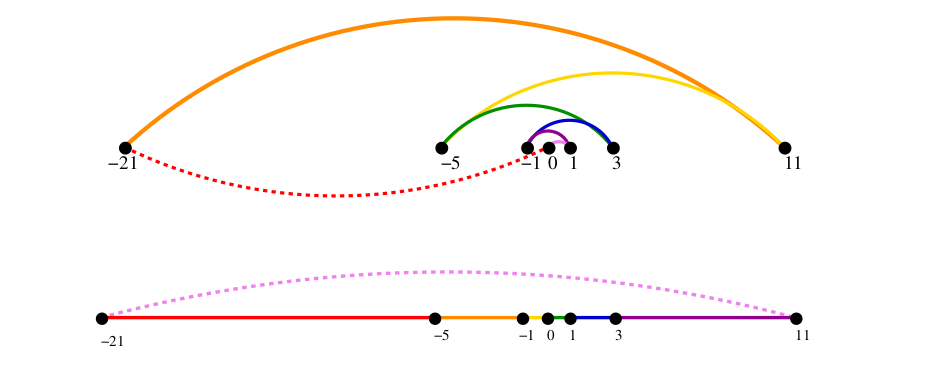# Algorithm Analysis --- CS 137 // 2021-08-30 <!--=====================================================================--> # Welcome! My name is Titus Klinge<br> (Please call me **Titus**) --- <div class="twocolumn" style="font-size: 85%"> <div> **Office:** 305 Collier-Scripps<br> **Email:** <titus.klinge@drake.edu><br> **Phone:** (515) 271-4599 </div> <div> **Office Hours:**<br> **Tu/Th:** 2:30–4:30 PM<br> (Held via Zoom) </div> </div> <!--=====================================================================--> # Introductions 1. <!-- .element: class="fragment"--> I will **badly mispronounce** your name 2. <!-- .element: class="fragment"--> Please stand up and correct my terrible pronunciation 3. <!-- .element: class="fragment"--> Let us know what you preferred to be called 4. <!-- .element: class="fragment"--> Share one hobby or interest you have <!--=====================================================================--> # Course Overview <!-- .slide: data-background="#004477" --> <!--=====================================================================--> ## Themes of the Course 1. Identifying and solving problems **efficiently** 2. <!-- .element: class="fragment"--> Be as **lazy** as possible - <!-- .element: class="fragment"--> i.e., **Reduce** problems to well-known related problems rather than solve them from scratch --- - <!-- .element: class="fragment"--> We want to recognize problems, get to the underlying difficulty behind them, and know what algorithm techniques to apply <!----------------------------------> ## Major Algorithm Design Techniques 1. Divide and Conquer 2. Backtracking 3. Greedy 4. Dynamic Programming <!--=====================================================================--> ## Algorithm Design - An algorithm solves a **general problem** - <!-- .element: class="fragment"--> To specify an algorithmic problem we must define: 1. <!-- .element: class="fragment"--> The set of **instances** the algorithm works on 2. <!-- .element: class="fragment"--> The desired properties of the output <!--=====================================================================--> ## Example Problem: Sorting - **INPUT:** A sequence of numbers $(a_1,a_2,\ldots a_n)$ - **OUTPUT:** a permutation of the input sequence $(b_1,b_2,\ldots b_n)$ that satisfies $b_1 \le b_2 \le \cdots \le b_n$ --- - <!-- .element: class="fragment"--> We want *correct* and *efficient* algorithms - <!-- .element: class="fragment"--> A faster algorithm on a slower computer will **always** win for sufficiently large instances <!--=====================================================================--> ## Specifying an Algorithm - How can we specify an algorithm? <!----------------------------------> ## Option 1: Actual Code ```py def insertion_sort(t): for i in range(1, len(t)): insert_left(t, i) def insert_left(t, i): if i > 0 and t[i] < t[i-1]: t[i], t[i-1] = t[i-1], t[i] insert_left(lst, i-1) ``` <!----------------------------------> ## Option 2: English - Keep two lists of numbers---one sorted and one unsorted - Start the unsorted list with one number and the unsorted list with the rest of the numbers - Take one number from the unsorted list and "insert" it into the sorted list, maintaining its sortedness - Repeat the above step until the unsorted list is empty---the output is the sorted list <!----------------------------------> ## Option 3: Pseudocode - Given input $A[n]$, an array of $n$ values, do: + For each $i$ from $1$ to $n-1$, do: * Set $j = i$ * While $j > 0$ and $A[j] < A[j-1]$, do: - Swap the values of $A[j]$ and $A[j-1]$ * Set $j = j - 1$ <!----------------------------------> ## Specifying Algorithms - In this course, we will use a combination of real code, pseudocode, and English - <!-- .element: class="fragment"--> By default, write your solutions in pseudocode, unless I explicitly ask you to "describe" an algorithm or use a specific language <!--=====================================================================--> ## Correctness - How do we know when an algorithm is *correct*? - <!-- .element: class="fragment"--> Sometimes correctness is not obvious at all! <!----------------------------------> ## Example: UPS Routing - Suppose you work for UPS and are helping route deliveries - <!-- .element: class="fragment"--> Given a set of delivery locations, we wish to generate a path that visits each location using minimal travel time - <!-- .element: class="fragment"--> We seek the "shortest tour" of all of the points <!----------------------------------> ## Example: UPS Routing - **INPUT:** A set of points $\{(x_1,y_1),\ldots (x_n,y_n)\}$ - **OUTPUT:** A path that visits every point exactly once with minimal length  <!----------------------------------> ## Nearest Neighbor Tour - <!-- .element: class="fragment"--> Given a set of points $S$ + Pick and visit some initial point $p_0\in S$ + Let $i = 0$ + While there are still unvisited points in $S$: * Let $p_{i+1}$ be the closest unvisted point to $p_i$ * Visit $p_{i+1}$ * Let $i = i + 1$ + Return the path $(p_0, p_1, \ldots, p_{n-1})$ <!----------------------------------> ## Nearest Neighbor is Wrong! - <!-- .element: class="fragment"--> Consider the following set of points where $p_0 = 0$  - <!-- .element: class="fragment"--> Starting from the left doesn't fix the problem! <!--=====================================================================--> ## Proving Correctness - Must **prove** that an algorithm always returns the desired output for all legal instances of the problem <!----------------------------------> ## Exhaustive Search - Consider the algorithm of trying all possible orderings of points and returning the shortest --- - <!-- .element: class="fragment"--> Given a set of points $S$ + Let $d = \infty$ + For each permutation, $\pi$, of the points $S$: * If $\text{cost}(\pi) < d$ then: - $d = \text{cost}(\pi)$ and $\pi_\text{min} = \pi$ + Return $\pi_\text{min}$ <!----------------------------------> ## Exhaustive Search - Since all possible paths are considered, this approach will always return the shortest tour - <!-- .element: class="fragment"--> How many total paths are there? + <!-- .element: class="fragment"--> $n!$ permutations! + <!-- .element: class="fragment"--> This algorithm is so slow that it useless for more than a dozen or two points - <!-- .element: class="fragment"--> Later we will see that **no** efficient algorithm exists to solve the traveling salesman problem <!----------------------------------> ## Types of Proofs - Proofs often fall into these categories: + <!-- .element: class="fragment"--> Direct Proof + <!-- .element: class="fragment"--> Proof by Construction / Counterexample + <!-- .element: class="fragment"--> Proof by Contradiction + <!-- .element: class="fragment"--> Proof by Induction <!--=====================================================================--> # Course Logistics <!-- .slide: data-background="#004477" --> <!--=====================================================================--> ## Course Website [analytics.drake.edu/teaching/2021f/cs137](https://titusklinge.com/teaching/2021f/cs137/) <!----------------------------------> <!-- .slide: data-background-iframe="https://titusklinge.com/teaching/2021f/cs137/" data-background-interactive --> <!--=====================================================================--> # Assignment 1 Due **Wednesday, September 1st** (before class) 1. Read the **syllabus** 2. Complete a **questionnaire** 3. Start the assigned **readings** 4. Do the first daily exercise <!----------------------------------> <!-- .slide: data-background-iframe="/teaching/2021f/cs137/assignments/assignment-1/" data-background-interactive -->